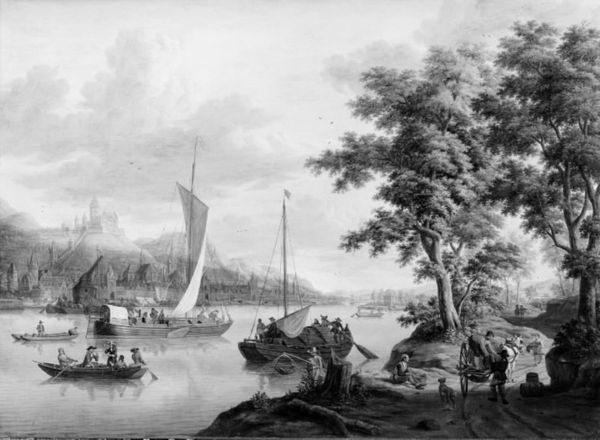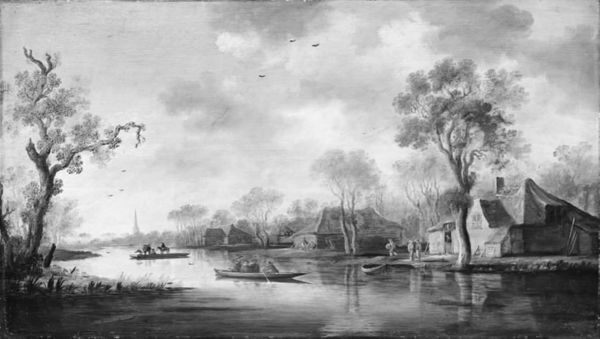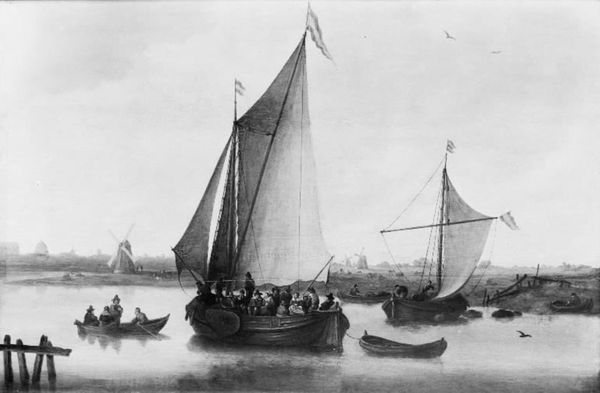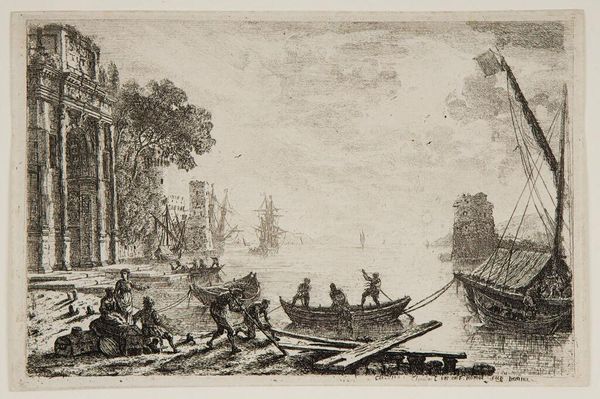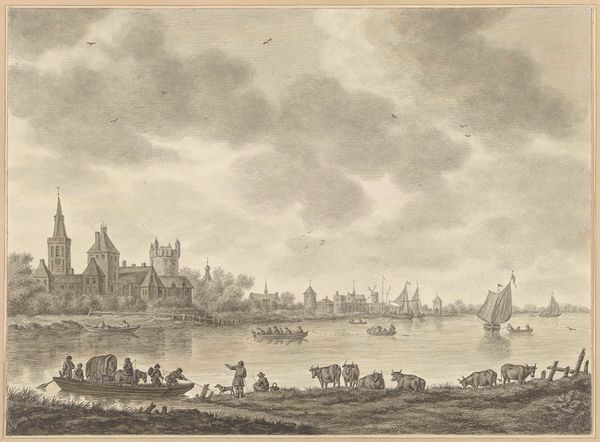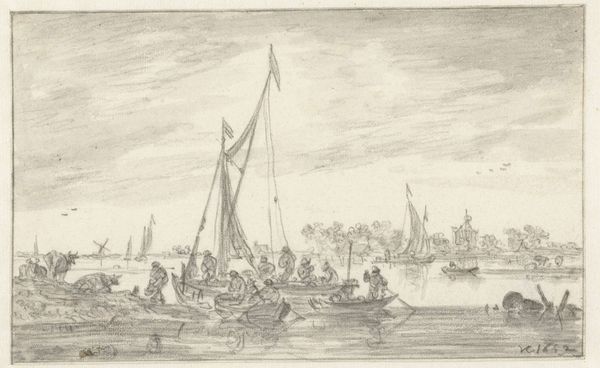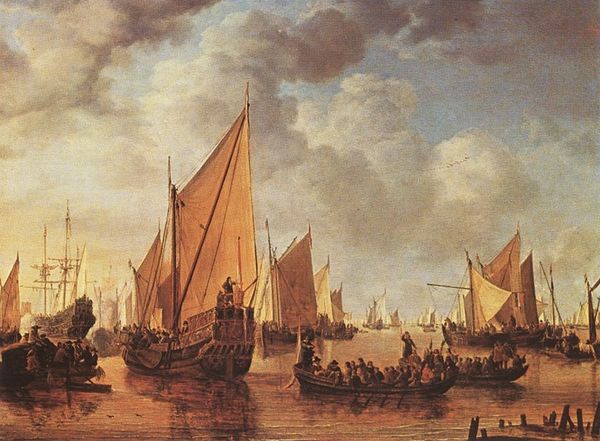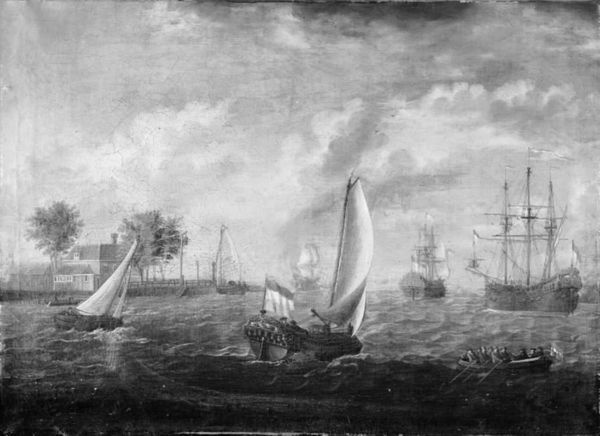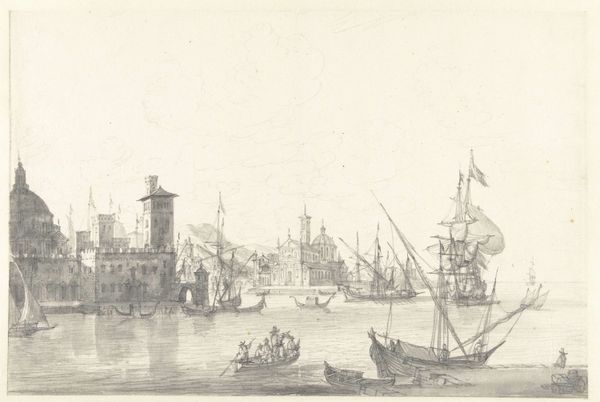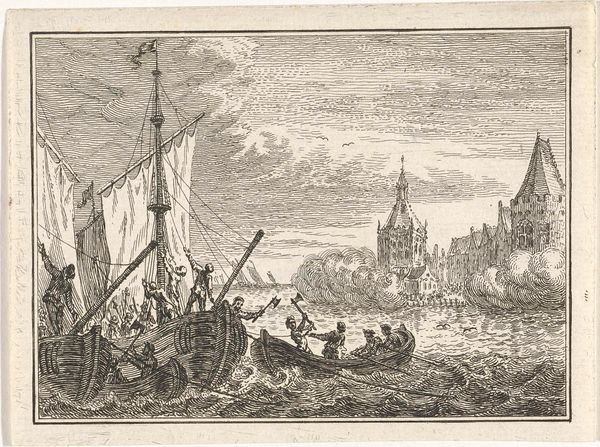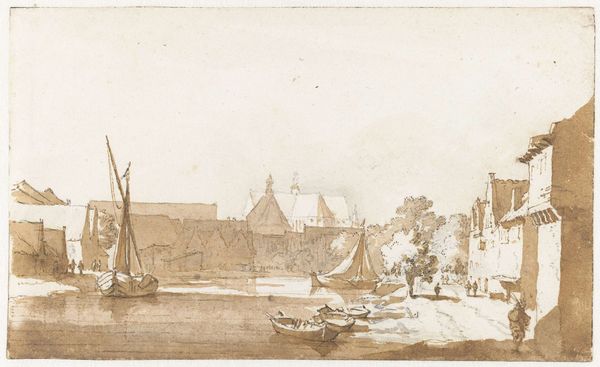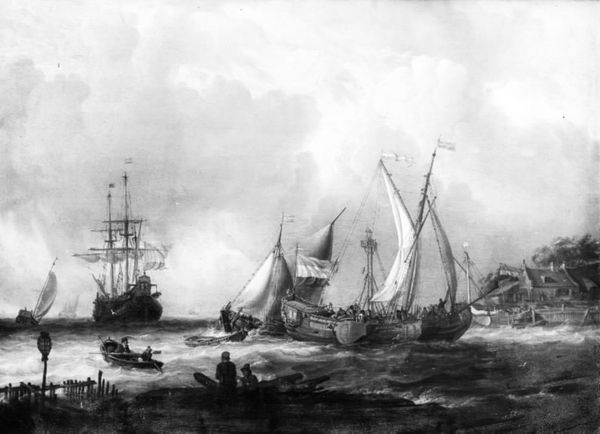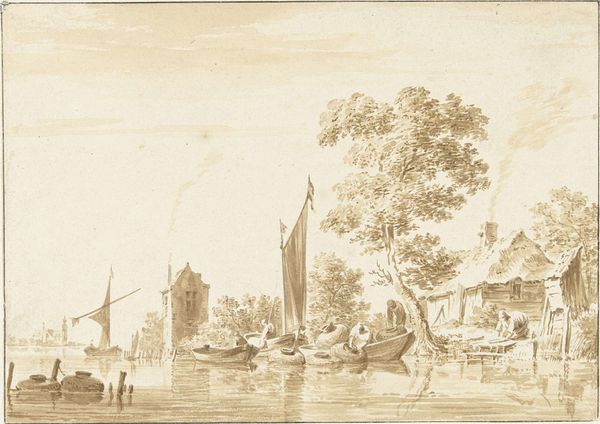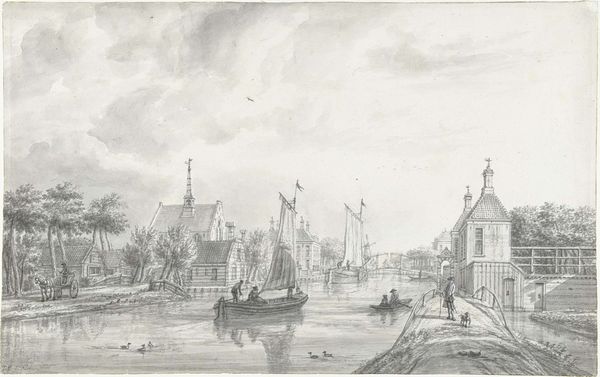
painting, oil-paint, canvas
#
baroque
#
dutch-golden-age
#
painting
#
oil-paint
#
landscape
#
charcoal drawing
#
charcoal art
#
canvas
#
cityscape
#
genre-painting
#
charcoal
#
graphite
#
realism
Dimensions: 48 cm (height) x 64 cm (width) (Netto)
Thomas Heeremans created 'Dutch City' using oil on canvas, during the Dutch Golden Age. Oil paint’s unique capacity for blending allowed Heeremans to capture light as if it were shimmering on the water, and to articulate the town's architecture with great precision. But even with these impressive effects, it's important to remember the labor involved in the painting's creation. The pigments had to be mined, processed, and mixed into a binding medium – often linseed oil. The canvas, too, was the result of intensive labor by weavers. Heeremans wasn’t just representing a scene, but also participating in a complex web of extraction, production, and consumption. By understanding the painting's material origins, we can see how it reflects the wider social and economic systems of its time. Thinking about the paint itself, and the making, brings us closer to the world that Heeremans inhabited.
Comments
No comments
Be the first to comment and join the conversation on the ultimate creative platform.
